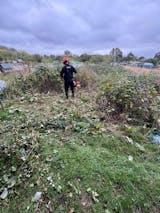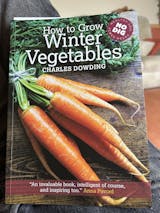Precision watering
*If you subscribe to my newsletter, please check your spam folder, because we switched to beehiiv and changed address
March here was exceptionally dry, only 5mm / 1/5 inch of rain in the whole month. Compared to the average of 85mm. April is starting the same way with dry east to north winds, and this blocked pattern could continue all month.
So … check out my new reel about selective watering. On new plantings, salad vegetables and leaf vegetables mainly. Water with a can or held-hose, not with wasteful sprinklers, which encourage weeds also.

Helping transplants
As much as spring days are sunny, nights are often cold. Plants need help to grow and in the featured image, and this short video, are many covers.
I explain why and how I use them, mainly to protect from cold winds and pests.
I use covers of polyropylene from Gardening Naturally, and of plant matter from Crocus.
For hoops, the high tensile wires are quick and easy, though not cheap.

Dibbing
Since 1983 I have used a 60 cm / 2 ft long dibber. I fashioned my first ones from old tool handles.
Because it works so well, I designed a long dibber. It's not cheap, and you can make your own, but I like these joinery-made ones of ash and Danish oil, with fat and very smooth ends.

Extra warmth
In my New Energies book, one energy I explain is the very simple and quick five stick method. It establishes an energy field inside of the five lines.
That has the effect of increasing the ground's absorption of sun rays. It's one of many factors helping growth here.
My first Energy course day here is 14th June.

Composts for no dig
All are good, even lumpy and less mature compost. See this new video of how I made a new bed.
It's unlikely you can make enough of your own compost for the large amounts needed when starting out. The photo shows some suitable composts from Woodland Horticulture.
Discover more of these details, especially about starting out no dig, in my new course. Which also has much information on growing vegetables, for beginners.

Spring harvests outside
There are few!
Right now it's broccoli season because we can overwinter plants sown in June. The ones below went in on 4th July, after clearing overwintered broad beans.
Since December they are protected by bird netting against pigeons, who love broccoli's tender leaves.














































0 comments